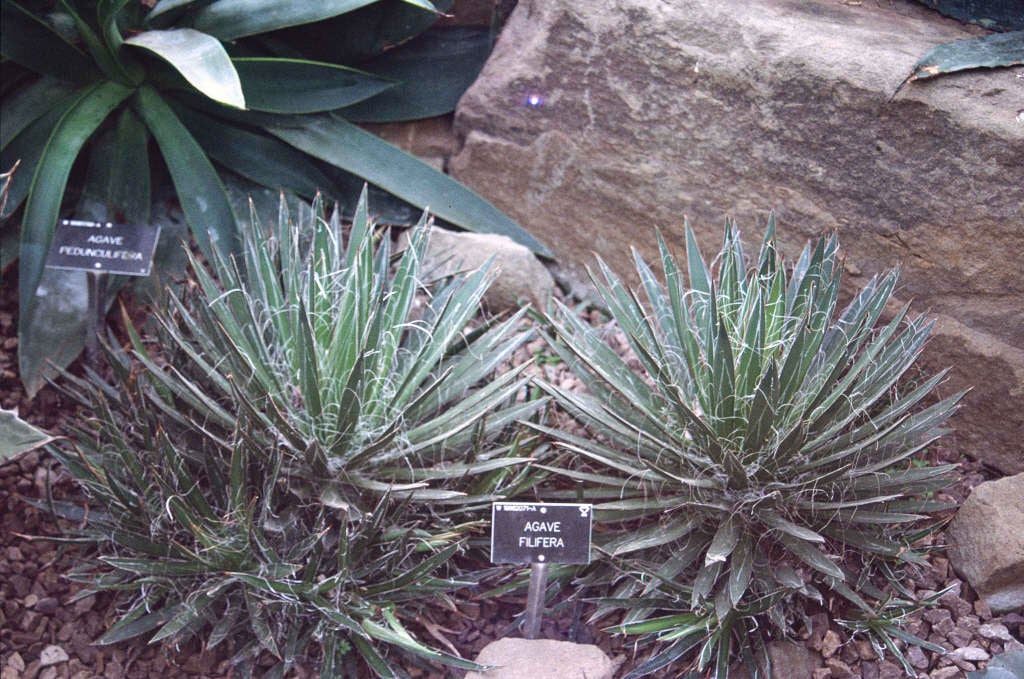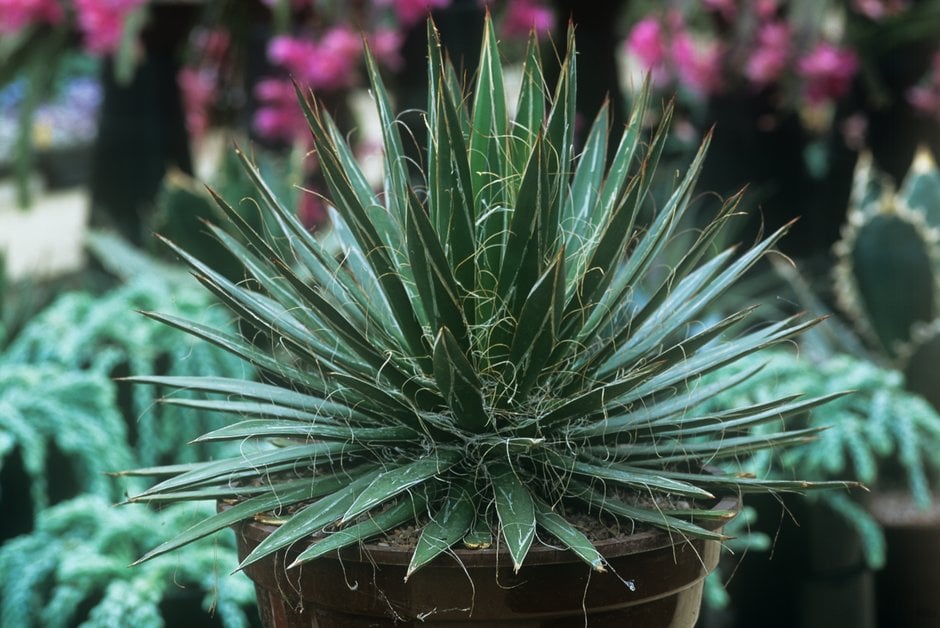Size
Ultimate height
0.1–0.5 metresTime to ultimate height
10–20 yearsUltimate spread
0.1–0.5 metresGrowing conditions
Moisture
Well–drainedpH
Acid, NeutralColour & scent
| Stem | Flower | Foliage | Fruit | |
| Spring | Green | |||
|---|---|---|---|---|
| Summer | Green | Green | ||
| Autumn | Green | |||
| Winter | Green |
Position
- Full sun
Aspect
South–facing or East–facing
Exposure
Sheltered Hardiness
H2Botanical details
- Family
- Asparagaceae
- Native to GB / Ireland
- No
- Foliage
- Evergreen
- Habit
- Bushy
- Potentially harmful
- Skin irritant. Wear gloves and other protective equipment when handling. Pets (dogs, cats): harmful if eaten. For further information and contact numbers regarding pets, see the HTA guide to potentially harmful plants
- Genus
Agave can be perennial or monocarpic succulents, forming rosettes of usually rigid, fleshy, spiny-edged leaves, with funnel-shaped flowers in racemes or panicles often much taller than the rosettes
- Name status
Correct
- Plant range
- N & C Mexico
How to grow
Cultivation
Grow under glass in a standard cactus compost, in bright, filtered light. When in growth water moderately and feed every two or three weeks with a balanced liquid feed. Keep almost dry in the winter. See houseplant cacti and succulent cultivation for further information
Propagation
Propagate by offsets taken in spring or autumn
Suggested planting locations and garden types
- City and courtyard gardens
- Gravel garden
- Architectural
- Coastal
- Mediterranean climate plants
Pruning
No pruning required
Pests
May be susceptible to scale insects
Diseases
Generally disease-free
Get involved
The Royal Horticultural Society is the UK’s leading gardening charity. We aim to enrich everyone’s life through plants, and make the UK a greener and more beautiful place.

